Dogs may have a number of traits in common, but they all differ in various ways. Some enjoy being active running companions, some want to put their sniffer to use 24/7, and others prefer to curl up in mom’s or dad’s lap — what we’re discussing today!
There are plenty of adorable breeds out there who love a good snuggle (and are the equivalent of portable lap warmers). We’ll share some of the best and explain some of the things to keep in mind when caring for them below.
We’re aware that many large breeds behave like lap dogs (Looking at you, Great Danes!), but we’ll only be focusing on small dog breeds today — around 5 to 16 inches tall and under 23 pounds.
If you’re after a gentle giant in particular, make sure to check out our article on the 20 largest dog breeds in the world.
The 16 Best Lap Dogs: Super Sweet Snugglers That’ll Keep You Toasty
Say goodbye to chilly nights — these 16 breeds are sure to snuggle up and keep your lap extra toasty in the winter months. Each four-footed woofer is a manageable size, can happily live in an apartment, and is super affectionate with his owner.
Oh, and unlike gentle giants, they won’t hog the couch!
1. Bichon Frisé
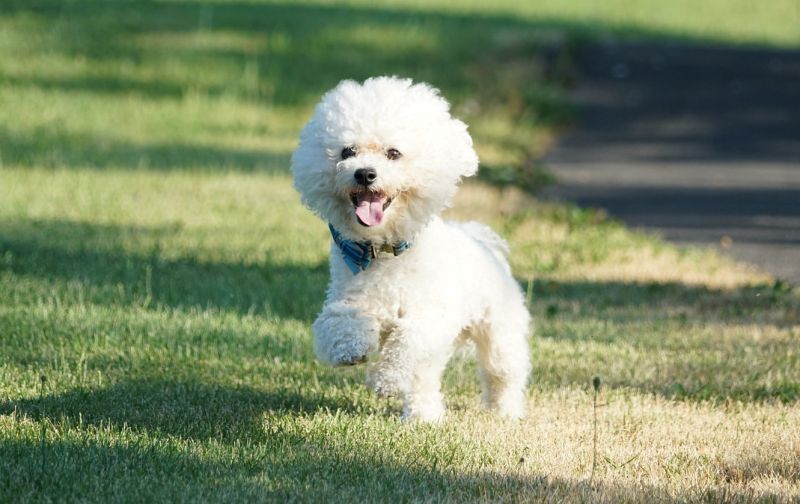
This adorable doggo could easily be mistaken for a white, fluffy teddy bear. So, it should come as no surprise that the bichon frisé is super cuddly!
The bichon frisé isn’t just renowned for his velvety plush appearance though — he has all the qualities of a pawfect lap dog. He’s affectionate, happy-go-lucky, and loves nothing more than snuggling up on his owner’s lap. He also gets along well with children and sees a friend in everyone.
The bichon frisé reaches about 11.5 inches tall and weighs between 12 and 15 pounds. He needs around 30 minutes of exercise per day and appreciates plenty of interactive and engaging games that put his brain to work, such as fetch, puzzle toys, and learning new tricks.
Bichon frisés are also famous for their hypoallergenic coats. Now, no dog is truly hypoallergenic — though some are better for people with allergies than others — but bichon frisés shed minimally and tend to produce less dander than other dogs, meaning they’re less likely to trigger your allergies compared to the likes of a German shepherd or Akita.
However, their soft corkscrew curls do need daily brushing.
2. French Bulldog
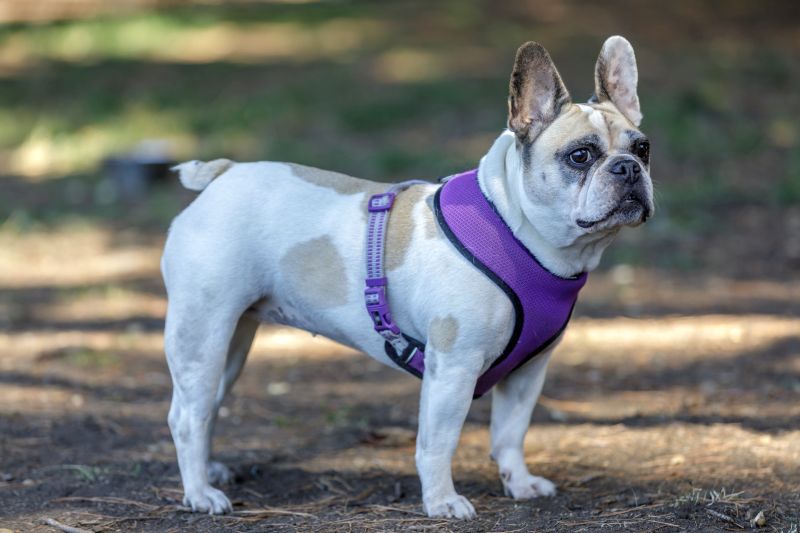
Developed to be a loyal, lap-sized companion, the French bulldog is an adaptable, laidback canine who loves playing and cuddling in equal measures.
He is well-known for his endearing squishy face, pronounced bat ears, and adorable wrinkles. He has a silky smooth coat which is generally easy to groom, though his skin folds do need frequent cleaning to prevent infections.
French bulldogs get along well with other animals, don’t bark much, and have low energy needs. They grow up to 13 inches tall and rarely weigh more than 28 pounds.
Sadly, many French bulldogs – like many other short-faced breeds – suffer from brachycephalic airway obstruction syndrome (BOAS) because of their shortened skulls. They’ll need regular vet checkups and close supervision in hot weather. They also shouldn’t be overexercised.
3. Cavalier King Charles Spaniel
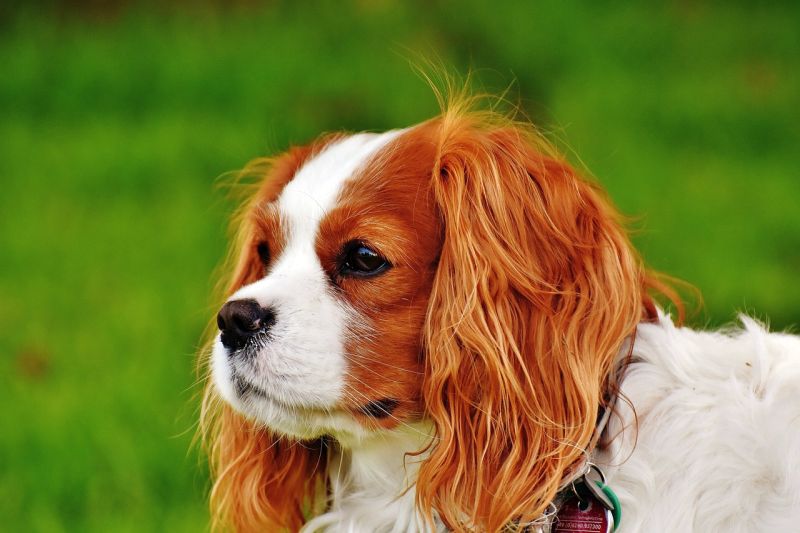
Cavalier King Charles spaniels were quite literally bred to warm the laps of nobles back in the 1600s (those drafty castles didn’t exactly have top-notch heating!). So, it’s pretty understandable why they’re featured on this list — they have retained their lap dog instincts today and will never let your legs go chilly.
The cavalier King Charles spaniel is even-tempered, affectionate, and graceful, with a regal look and luscious, silky locks. He falls into the American Kennel Club’s (AKC) toy group classification and grows up to 13 inches tall.
The cavalier spaniel is also easygoing and can adapt to his owner’s lifestyle, whether that involves regular hikes and adventures, or lounging around and being a couch potato. However, this woofer often has an insatiable appetite and won’t hesitate to scoff down whatever food you give him.
It’s important to closely monitor his diet to ensure he doesn’t become overweight.
4. Maltese
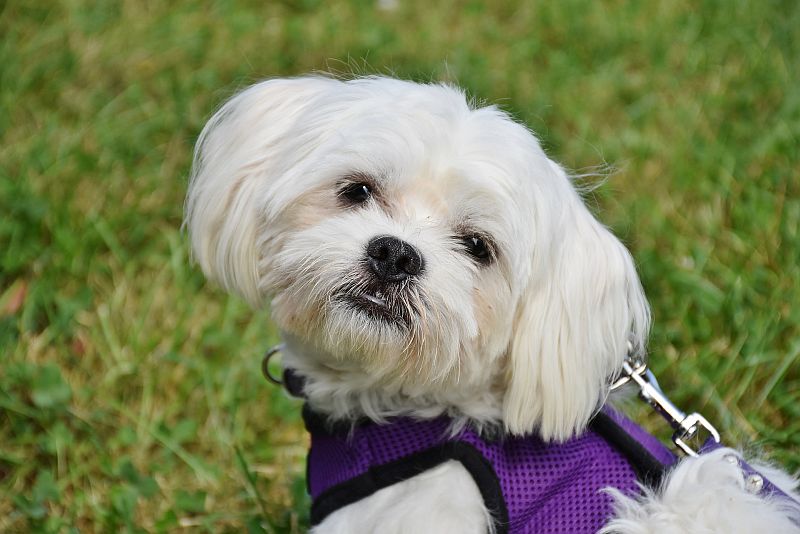
The Maltese is one of the oldest toy breeds in the world, with origins likely dating back thousands of years. While his exact history is a mystery, his personality certainly isn’t! He’s playful, charming, and incredibly affectionate.
He also makes a fantastic lap dog; typically weighing less than 7 pounds, he won’t cause you any discomfort while snoozing away on your lap. Plus, this breed sheds minimally and won’t leave your lap covered in drool.
The Maltese is alert and protective of his favorite humans, so he makes an excellent watchdog (even if his adorable looks probably won’t deter strangers). He’s also patient, gentle, and always down for a game of fetch.
However, while he thrives best with a family who’s around all day long, this woofer isn’t a suitable playmate for children — his body is incredibly fragile and prone to injuries.
5. Pekingese
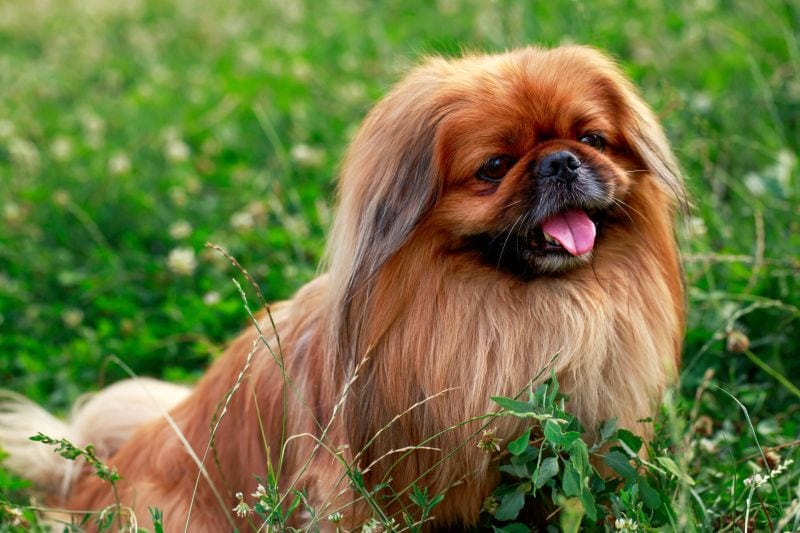
The Pekingese is another ancient dog breed with origins dating back more than 2,000 years ago. He was a popular pet among royals in the Han Dynasty era and was seen as a symbol of wealth, status, and prosperity.
With a background like that, it’s no surprise that this four-legged woofer looks majestic and acts in a graceful manner. He can be headstrong— likely perceiving us humans as his loyal peasants — but with plenty of training he makes an obedient, even-tempered pup. Plus, his favorite pastime is warming up the lap of his owner.
Pekingese reach 9 inches tall and weigh less than14 pounds. They’re also fairly quiet canine companions, with most only barking as a way to alert their owners. However, their gorgeous coats require lots of maintenance, so expect to invest in some quality grooming supplies if you adopt this breed.
6. Pug
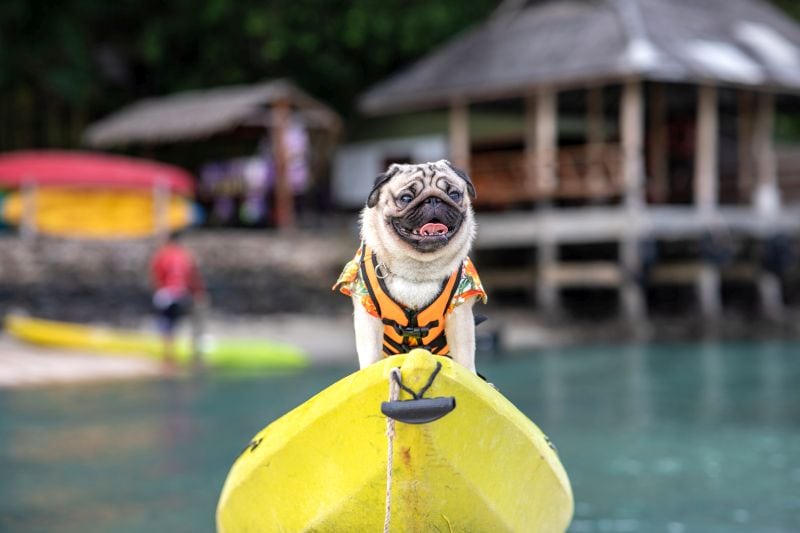
This charming pup makes a fantastic family companion who is sure to liven up your home with his goofy antics and insatiable desire for cuddles.
He gets along extremely well with kids, loves to be curled up on his owner’s lap, and will no doubt win over your “we’re not dog people” relatives with his adorable features (well… probably).
At 12 to 13 inches tall, pugs fall into the toy group. They come in two recognized colors — black and fawn — and are adaptable to a range of home environments. While they don’t bark much, they do have a habit of screeching, especially if there are some nail trimmers in sight.
Do note that pugs also often suffer from BOAS, so regular vet checkups are a must.
7. Shih Tzu
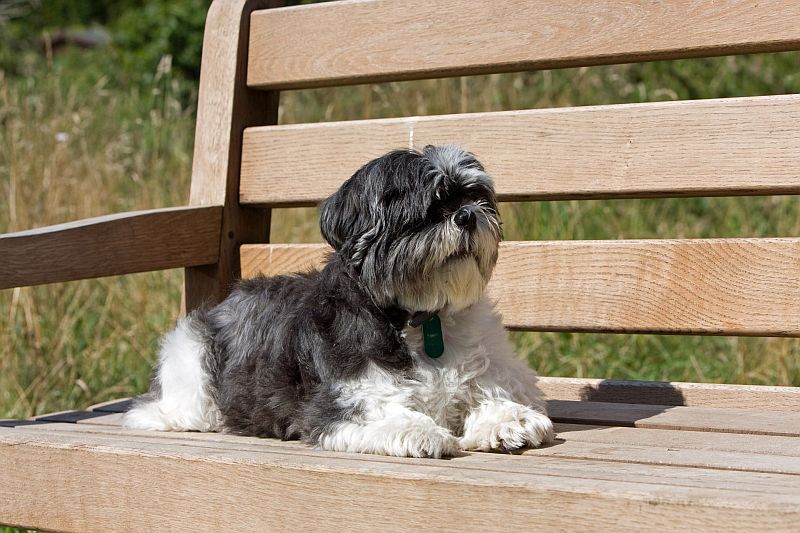
Aptly nicknamed “little lion,” the shih tzu is known for his fluffy mane and larger-than-life personality.
He’s outgoing, playful, and has a mischievous side you can’t help but love. Plus, like most dogs featured here, his favorite hobby is snuggling up on his owner’s lap. In fact, he’ll probably spend more time on your lap than in his actual bed (which you no doubt spent a fortune on).
Shih tzus stand 8 to 11 inches tall and weigh between 9 and 16 pounds. They need around an hour of exercise per day in the form of two to three short walks, as well as plenty of mental stimulation and affection.
Shih tzus are considered Velcro dogs and you’ll often find them following their owners from room to room. However, because of this close attachment, they do tend to suffer from separation anxiety if they’re left alone. They thrive with a family who can be with them throughout the day.
8. Havanese
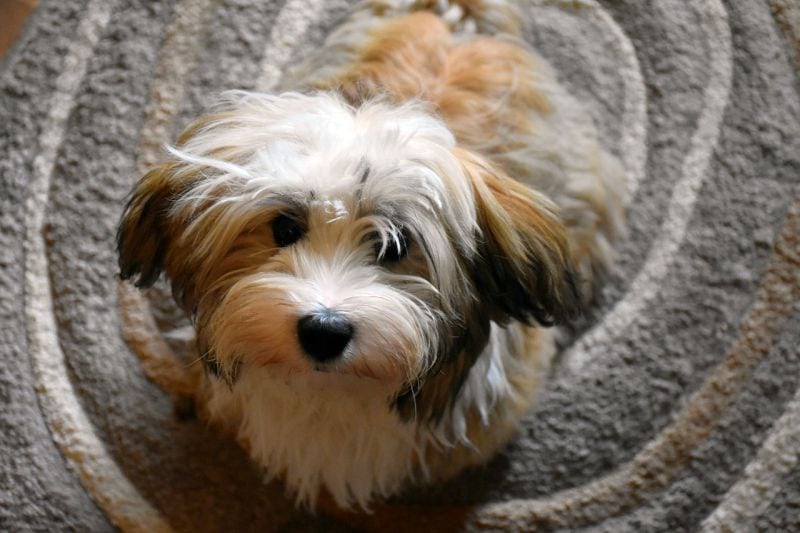
This little canine boasts the sweetest expression in existence — just look at those endearing puppy eyes!
Aside from looking utterly adorable, the Havanese makes a cheerful family companion. He’s gentle, adaptable, and loves nothing more than receiving attention from his family. He also enjoys snoozing away on his mom’s or dad’s lap.
Havanese (and most Havanese mixes) are eager to please and respond well to positive reinforcement training. They get along especially well with children, and while they’re sturdier than most lap dogs, kids should still be taught to play gently and not climb all over them.
Similar to the shih tzu, the Havanese is often attached by the hip to his owner and doesn’t tolerate being left alone for long periods. Only consider this breed if you don’t have a super busy schedule and can be home for most of the day.
9. Tibetan Spaniel
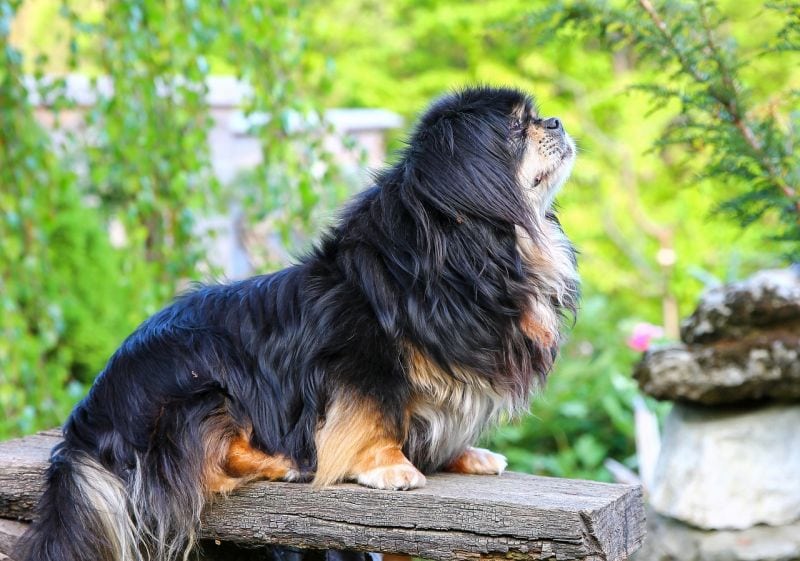
The Tibetan spaniel, aka the “Tibbie,” is an active, assertive companion dog who’s known for his playful personality.
While he’s reserved around strangers, he’s incredibly affectionate with his family and will do anything to protect them. Of course, he also enjoys a good cuddle and will keep your lap extra toasty!
The Tibetan spaniel reaches 10 inches tall and weighs between 9 and 15 pounds. He’s smart, eager to please, and is known to excel in competitive sports like rally, scent work, and agility.
While generally confident, he can be timid without proper early socialization. Make sure to expose him to a range of environments, people, animals, and sounds in a positive manner.
10. Affenpinscher
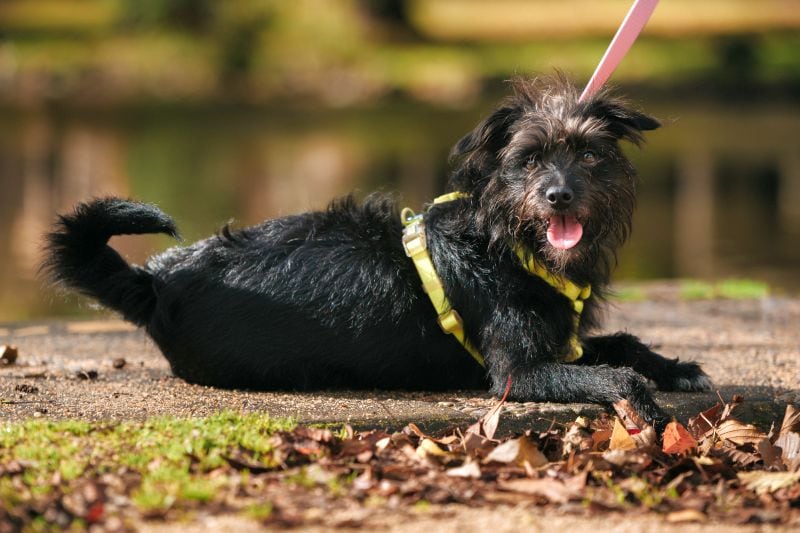
The affenpinscher, also known as the monkey terrier, is a somewhat rare breed that few people know about. However, we’re sure if this elusive canine was easier to find he’d be one of the most popular breeds out there! After all, he’s courageous, athletic, and loyal to his family.
The affenpinscher isn’t as attached to laps as other dogs featured here, but he does appreciate a good cuddle and lap snooze now and again. This makes him an ideal companion if you’re after a happy medium between a Velcro dog and active toy breed.
Affenpinschers grow up to 11.5 inches tall and are known for their distinct, shaggy coats. While intelligent, they’re independent-minded and like to do things their own way. They’ll need an owner who can be firm, consistent, and patient with training.
11. Japanese Chin
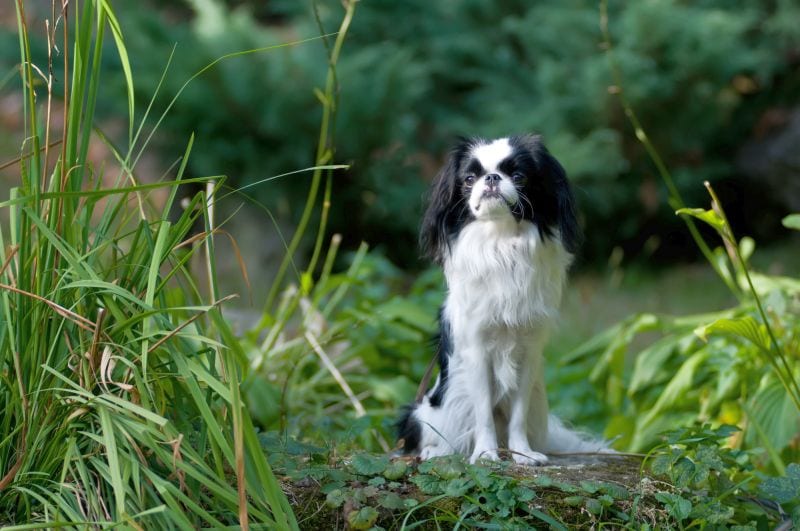
The Japanese chin is often considered a feline in disguise, and for good reason: He’s graceful, quiet, and boasts a cat-like, independent attitude. You’ll usually find him curled up on his owner’s lap or snoozing in a high-up area (and no, we have no idea how he got there either!).
This four-footed woofer is particularly renowned for his silky smooth coat and permanently shocked (but adorable) expression. He grows up to 11 inches tall and weighs around 7 to 11 pounds. While his coat sheds moderately, he practices self-grooming just like a cat and keeps his fur fairly clean and odor-free.
These pups have a lot of love to give, but they aren’t for everyone. They do often suffer from health problems due to their shortened skulls, and they also can’t tolerate being alone for long periods. But with the right family? Japanese chins are lovable lap dogs who will liven up your home with their unique personalities and endearing looks.
12. Brussels Griffon
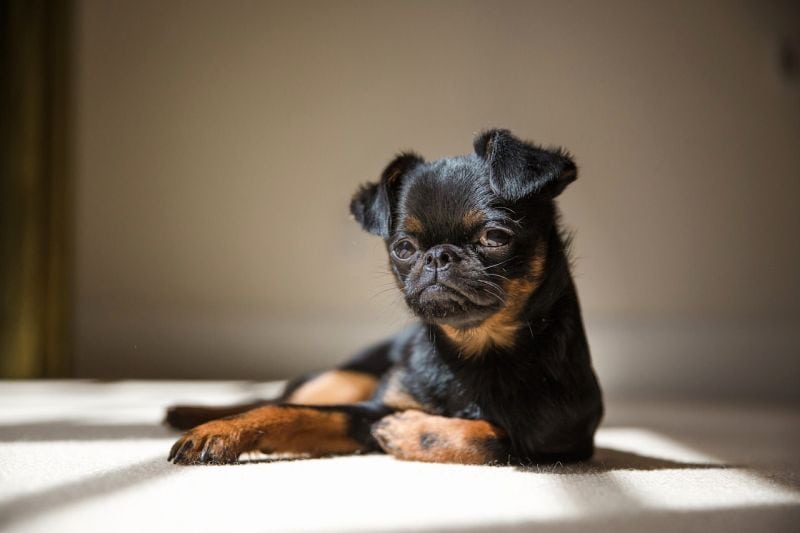
The Brussels griffon is an affectionate, lively companion who likes to see himself as the ruler of the couch, the home, the neighborhood, and heck, even the world.
When he’s not admiring his own adorable, majestic appearance, you’ll find him pleasing his humans and basking in any attention he gets. He also has no qualms about turning his owner’s lap into his permanent dog bed, so be prepared!
The Brussels griffon grows up to 7 to 10 inches tall and weighs less than10 pounds. While he’s incredibly intelligent and forms a strong bond with his owner, he can be sensitive and stubborn. He thrives with reward-based training that’s firm and consistent.
13. Chihuahua
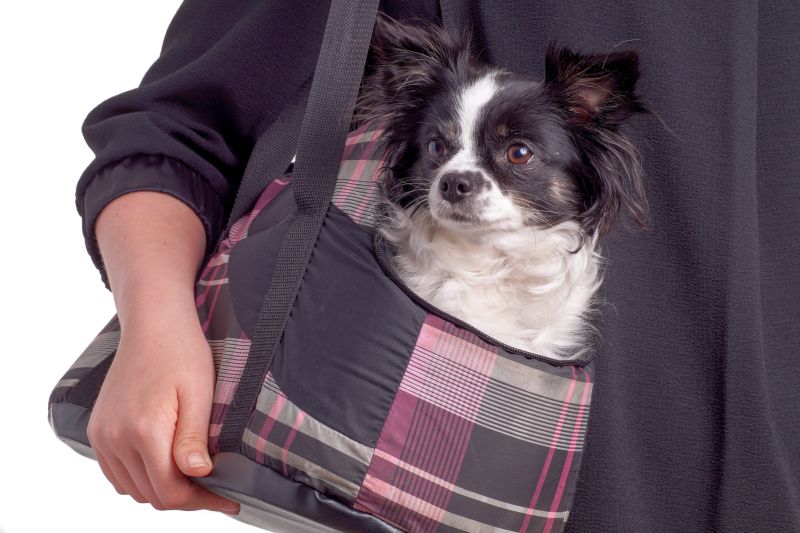
After a lap dog who is one of the best breeds for apartment life? Then look no further. The Chihuahua is one of the smallest dog breeds in the world, with an average height of 5 to 8 inches and a weight of less than 6 pounds.
He’s charming, graceful, and incredibly sassy. He often forgets just how small he is — so he’ll need to be closely supervised around bigger dogs — but he has plenty of love to give and enjoys a good lap snooze.
While adaptable to any living environment, this tiny pup needs a lot of mental stimulation and at least half an hour of exercise per day. His coat comes in two different types, smooth and long, but both coats are fairly easy to groom and maintain.
The Chihuahua is particularly renowned for developing “Napoleon syndrome” without proper training (more on this later). So, he benefits from a pet owner who has plenty of time to dedicate to his training and care.
14. Chinese Crested
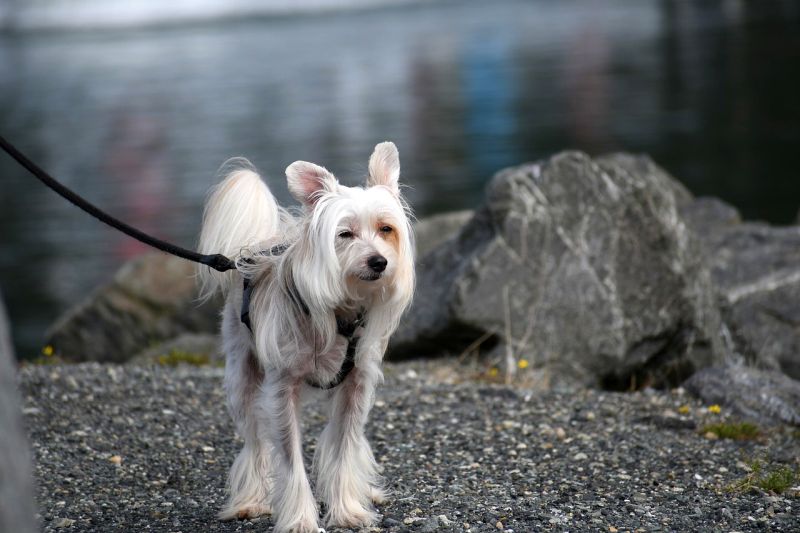
Chinese crested dogs come in two varieties: hairless and coated (powder puff). Both varieties make wonderful lap dogs.
While the hairless variety’s lack of fur might lead you to believe he isn’t a good choice for a lap warmer, this is actually what makes him perfect, even more so than the coated variety! Due to his lack of fur to keep his body warm, he’ll often use your lap as a heater and spend the majority of his day snuggling up to you, especially in colder temperatures.
The Chinese crested is alert, affectionate, and lively. He grows up to 13 inches tall and has an average life expectancy of 13 to 18 years, making him one of the longest-living pups out there. However, he can’t tolerate being left alone and often suffers from separation anxiety, so he’s best suited to an owner who doesn’t work long hours.
15. Boston Terrier
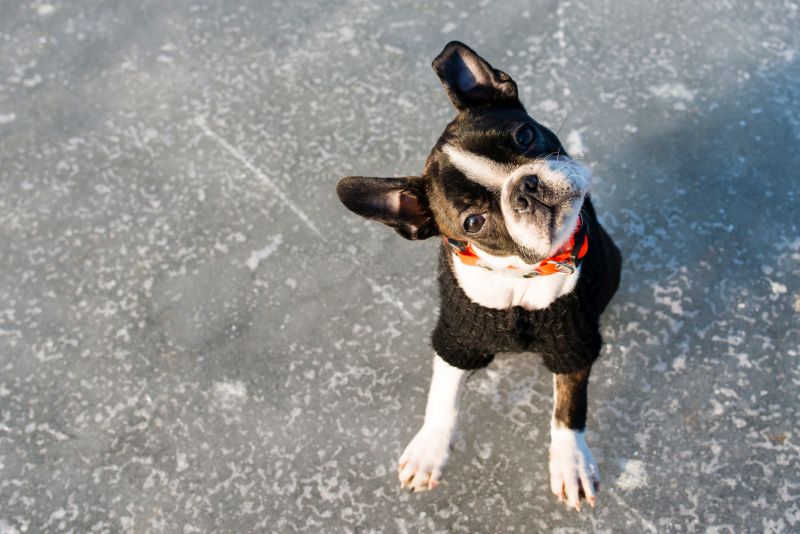
Compact, even-tempered, and sporting a stylish tuxedo-like coat, the Boston terrier is a small lap dog who appreciates laidback cuddles and exercise in equal measures. He gets along exceptionally well with kids, adults, and seniors alike, and he also has a comical side you can’t help but love.
The Boston terrier has a smooth, easy-to-maintain coat and reaches 17 inches tall. He is sturdier than most other small breeds, so he can tolerate some vigorous play with kids, but close supervision is always a must.
Boston terriers are bright and can pick up commands quickly. However, they’re sensitive and need a patient, reward-based training approach. BOAS is also a potential concern with this breed.
16. Pomeranian
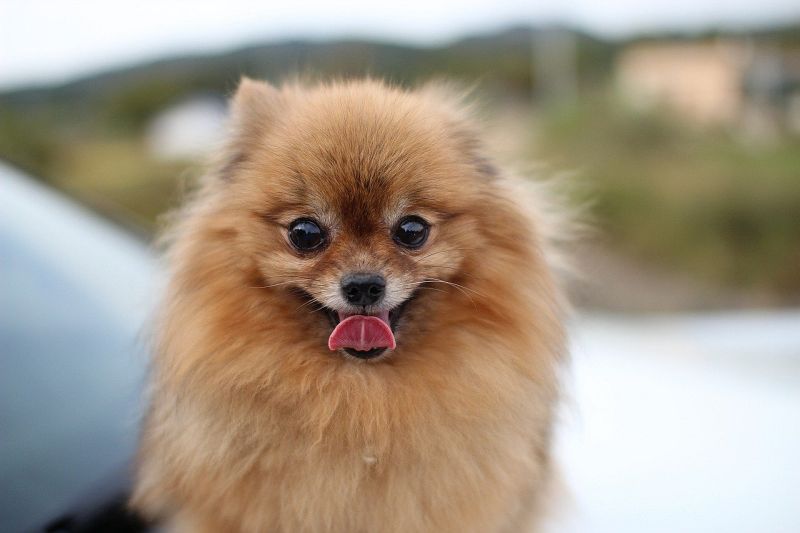
The Pomeranian is a feisty, bold, spitz-type pup who’s devoted to his family. When he’s not getting up to mischief or demanding attention, he’ll often spend his time turning your lap into his personal throne, er, resting spot.
The Pom grows 6 to 7 inches tall and can weigh as little as 3 pounds. Like most spitz breeds, he boasts a gorgeous thick double coat that’s super soft to the touch.
However, do note that his fur needs to be brushed daily to keep it in healthy, tangle-free condition. He also isn’t a suitable companion for children because of how small and fragile he is.
Special Considerations for Lap Dog Owners
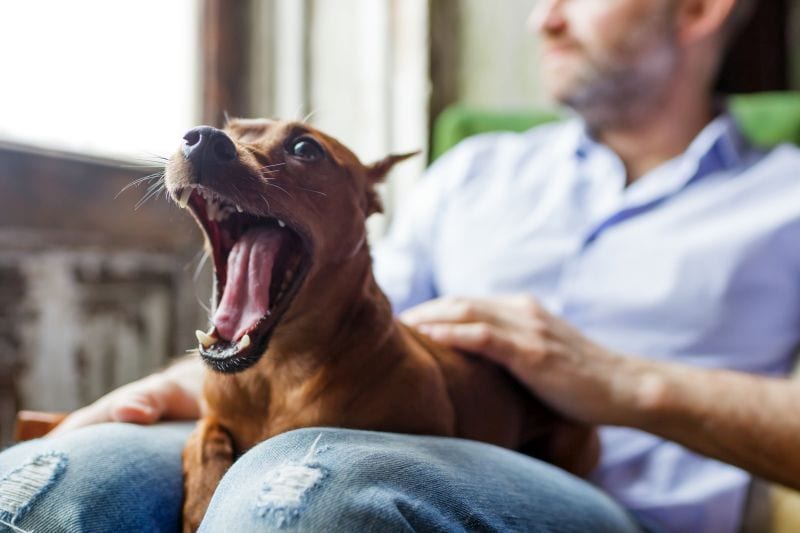
These lap hoggers, ahem, pups, have a whole lot of love and affection to give!
However, it’s important you know how to properly care for them. While each breed has its own distinct needs, there are some special considerations that apply to virtually every lap dog, including:
They Require Small Breed Dog Food
Always buy a dog food that’s suitable for small breeds — there’s no such thing as one-size-fits-all dog food!
Age, size, and activity level can all factor into what nutrients a dog should be consuming. Despite common misconception, small breeds usually require more calories per pound of body weight than large dogs since they expend energy at a quicker rate.
Lap Dogs Need to Eat More Frequently
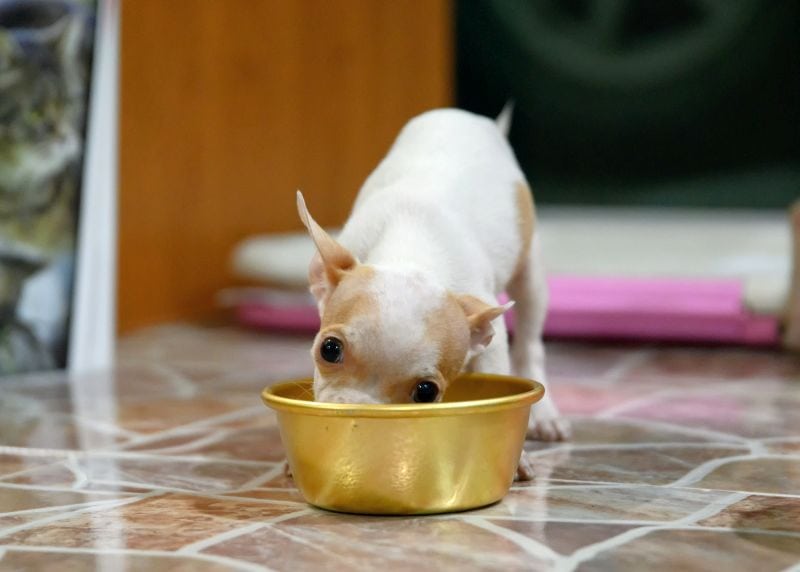
Small dogs typically need to eat more frequently than big breeds because they have faster metabolisms. Most small dogs should be fed two to three times per day, with the exact feeding frequency depending on activity level, metabolism, and age.
Frequent feedings will ensure your small pup has plenty of energy throughout the day, and it can also help prevent health complications like low blood sugar levels.
They’re Fragile and Can’t Tolerate Roughhousing
While big, sturdy dogs can handle plenty of roughhousing, most small dogs have fragile bodies that are prone to injury.
Ensure your kids know how to safely interact and play with small dogs. You should also opt for a harness instead of a collar. Harnesses help you avoid putting pressure on your dog’s throat and can help prevent injuries if your small pup suddenly pulls on his leash.
They Are Sensitive to Temperature Changes
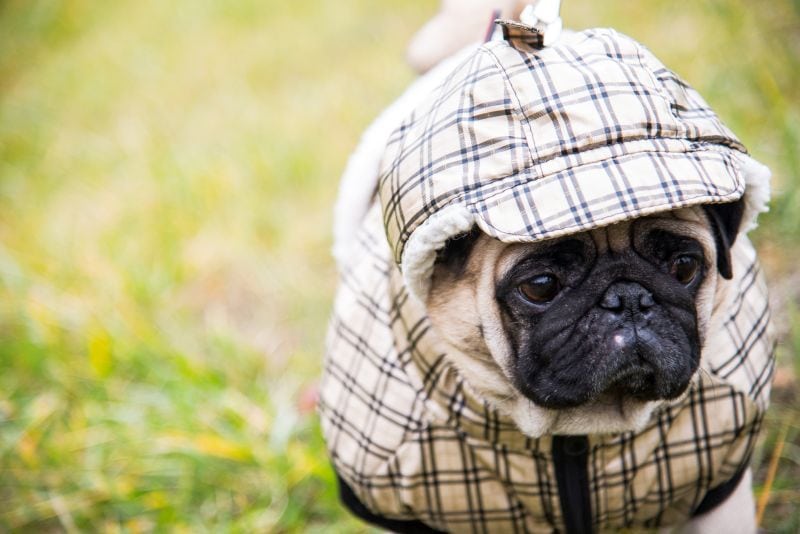
Small dogs are a lot more susceptible to feeling the cold than big dogs, especially if they have short coats. Keep small pups wrapped up warm and snug in lower temperatures and invest in a reliable pair of winter dog booties.
Many small breeds, including the pug, Havanese, and French bulldog, also experience breathing difficulties and struggle to properly cool themselves down in hot weather. During the summer, keep to shaded areas and ensure your pup always has access to fresh, cool water.
Many Small Dogs Suffer from Napoleon Syndrome
Napoleon syndrome, aka small dog syndrome, is a behavioral problem where small dogs develop short tempers and exhibit undesirable behavior. They often forget their own size and act like bigger dogs than they actually are, hence the term “Napoleon.”
This usually occurs because owners, won over by their small pup’s endearing features, neglect training and accidentally reward bad behavior with a whole lot of “awws.” Fortunately, with proper training, a consistent schedule, and plenty of positive socialization, Napoleon syndrome is easy to prevent and manage.
They Often Struggle with House Training
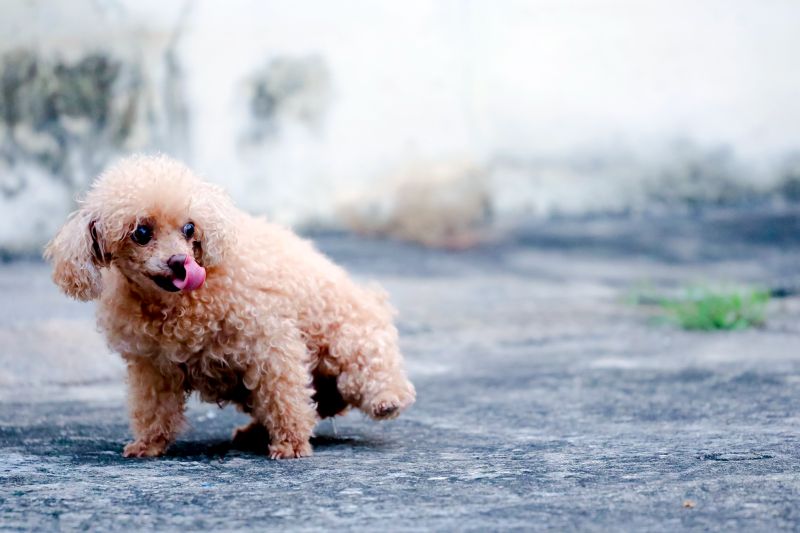
Yes, believe it or not, small lap dogs have a reputation for being a bit slow on the housebreaking front. A positive, persistent, and patient training approach can help small breeds master house training, though if your pup is struggling, don’t be afraid to reach out to a professional trainer for further help and guidance.
Some Small Lap Dogs Need a Lot of Exercise
A common misconception is that small lap dogs don’t require a lot of exercise because they’re, well, small! However, this isn’t the case. In fact, some small breeds require more exercise than large breeds — a cavalier King Charles spaniel needs around an hour of exercise per day, while a Great Dane is usually content with 40 to 60 minutes per day.
The Best Lap Dogs: FAQ
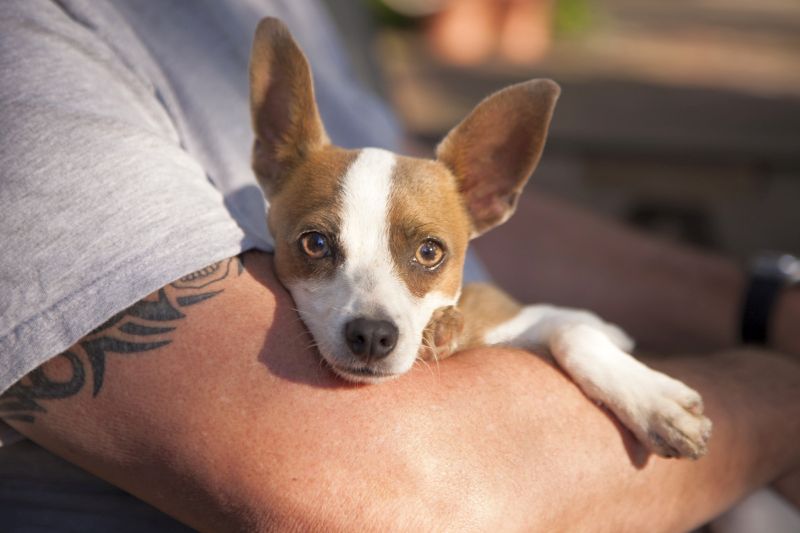
Still have a few questions remaining about lap dogs? Don’t worry — we won’t leave those questions unanswered!
What is the number 1 lap dog breed?
The most popular lap dog breed is likely the bichon frisé, due to his affectionate nature, happy-go-lucky attitude, and love for cuddles.
However, we don’t equate popularity with superiority. Each lap dog featured above is lovable and is better suited to certain needs than others — the number one lap breed for a laidback family might be a pug, while it would likely be a Tibetan spaniel for an active family.
What is the best quiet lap dog?
The quietest lap dog is the Japanese chin, who is often nicknamed the feline of the doggy world due to his quiet, cat-like nature.
However, keep in mind that while some breeds are less likely to bark or yap, all dogs can be loud if their needs aren’t met. Make sure your canine companion receives enough mental stimulation, exercise, and attention throughout the day.
What is the snuggliest small dog breed?
In our opinion, the snuggliest small dog breed is the shih tzu! His silky long-haired coat is extremely soft and makes for the ultimate cuddle experience.
With that said, every small dog breed is snuggly in their own right; the Chinese crested might not boast a fluffy coat, but he will never leave your side and shower you with plenty of affection!
What is the smallest lap dog?
The Chihuahua is widely considered to be the smallest lap dog in the world, only growing up to 8 inches tall and weighing under 6 pounds.
Other teacup-sized lap dogs include the Maltese, who weighs no more than 7 pounds, and the Pomeranian who reaches 7 inches tall and weighs between 3 and 7 pounds.
Do you own any of the lovable lap dogs featured on our list? Or do you know of another small breed that can make a pawfect portable lap heater? Let us know in the comments down below! We’re excited to hear all about it.
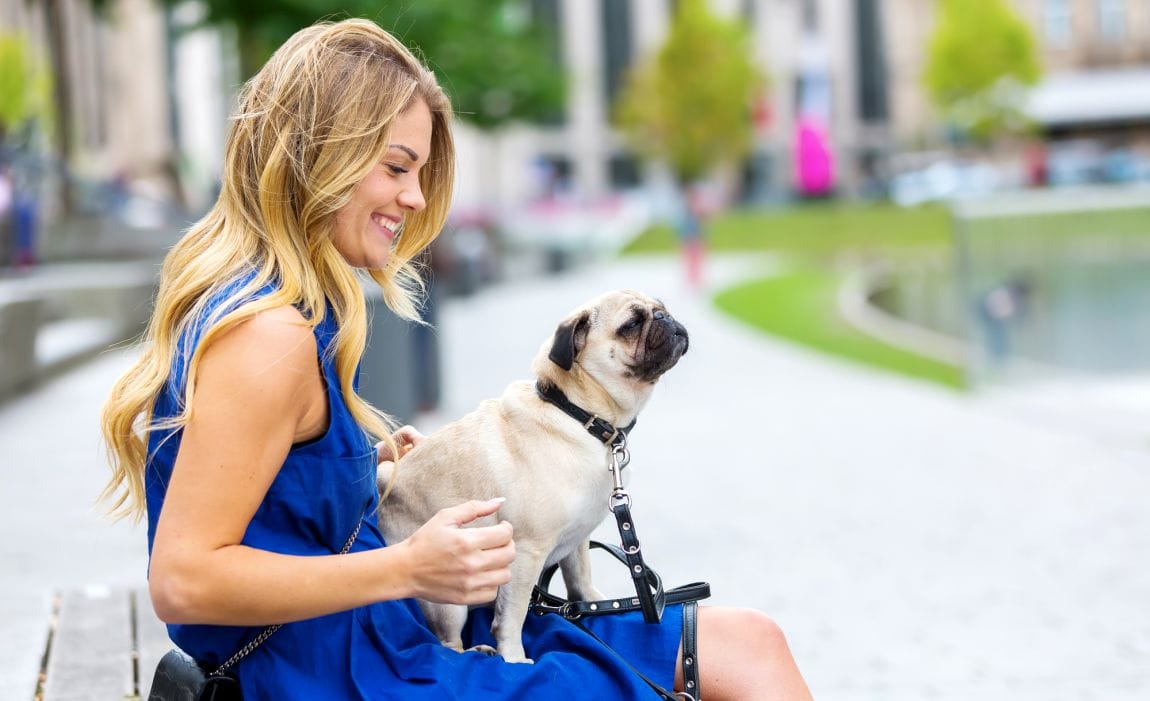

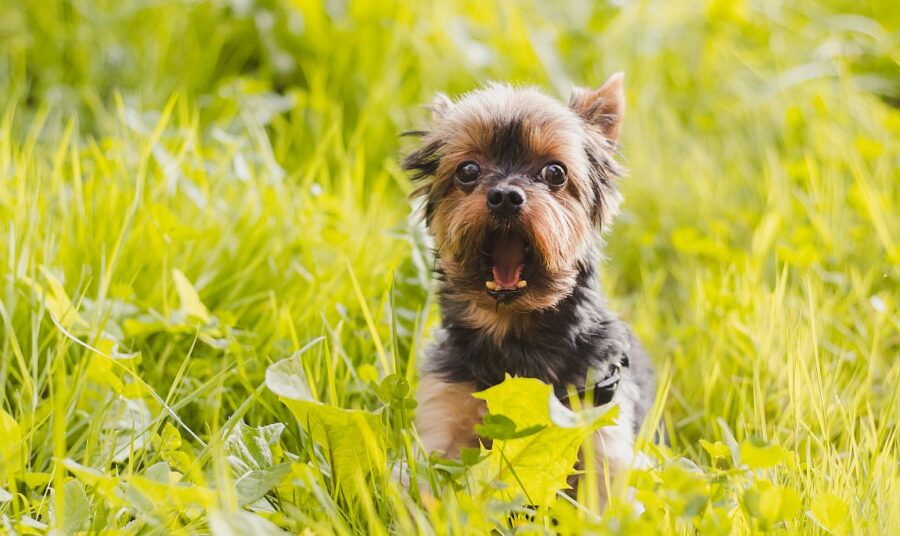


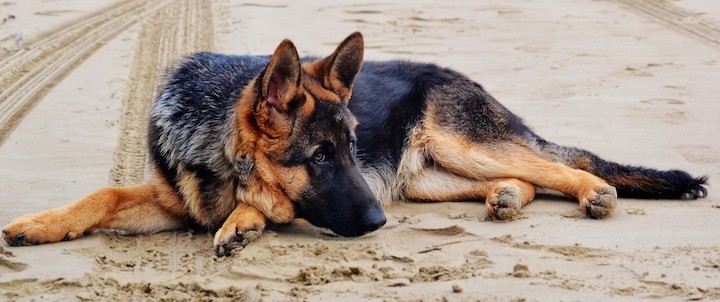
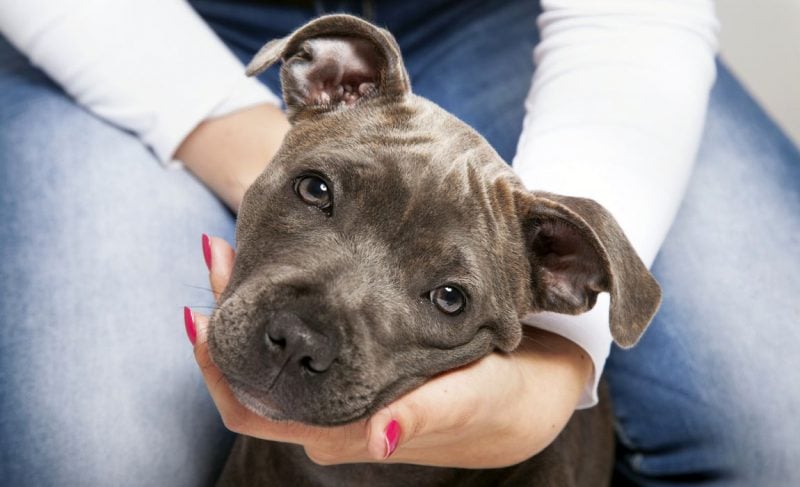
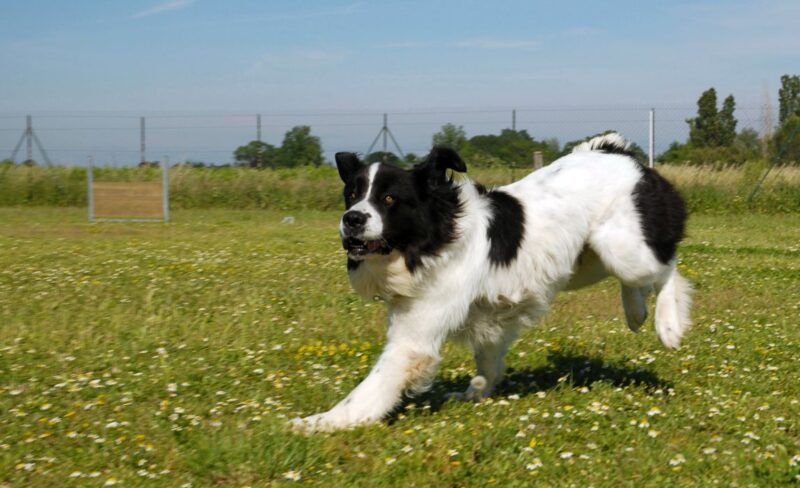
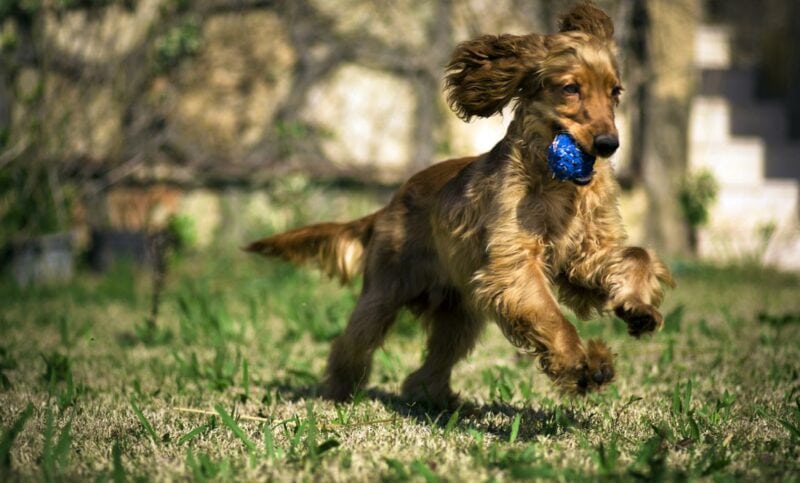
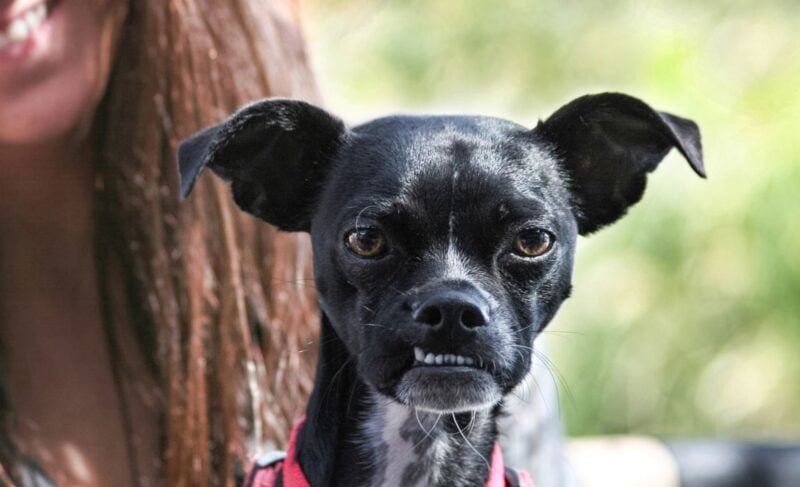
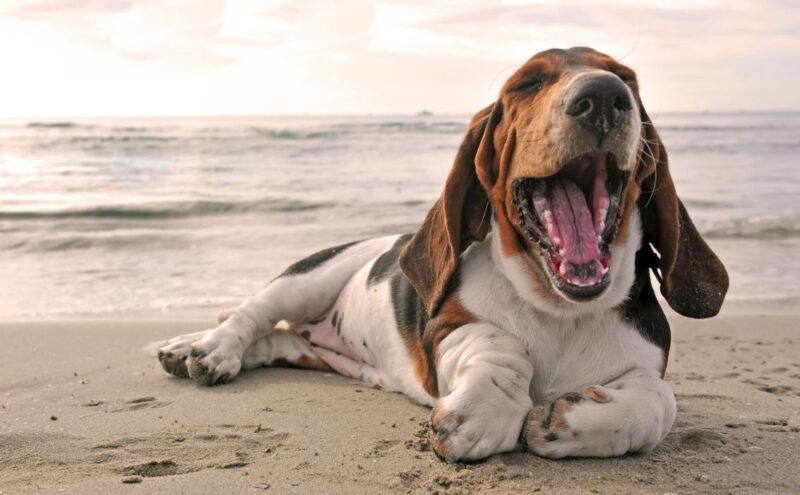
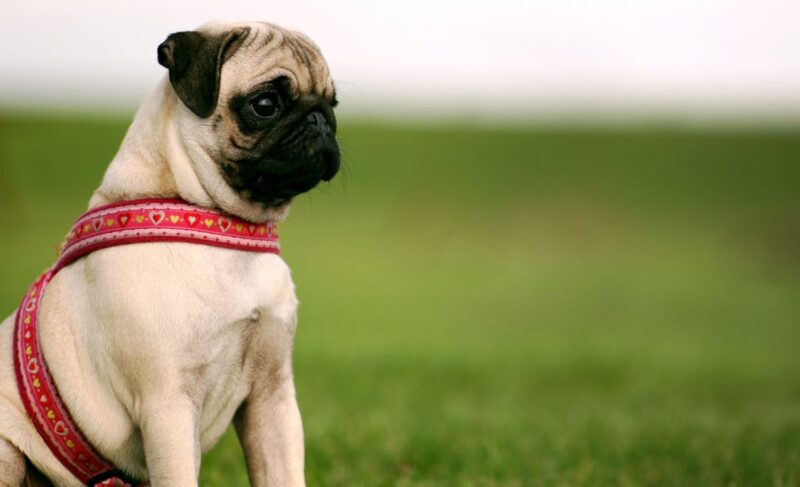

Leave a Comment